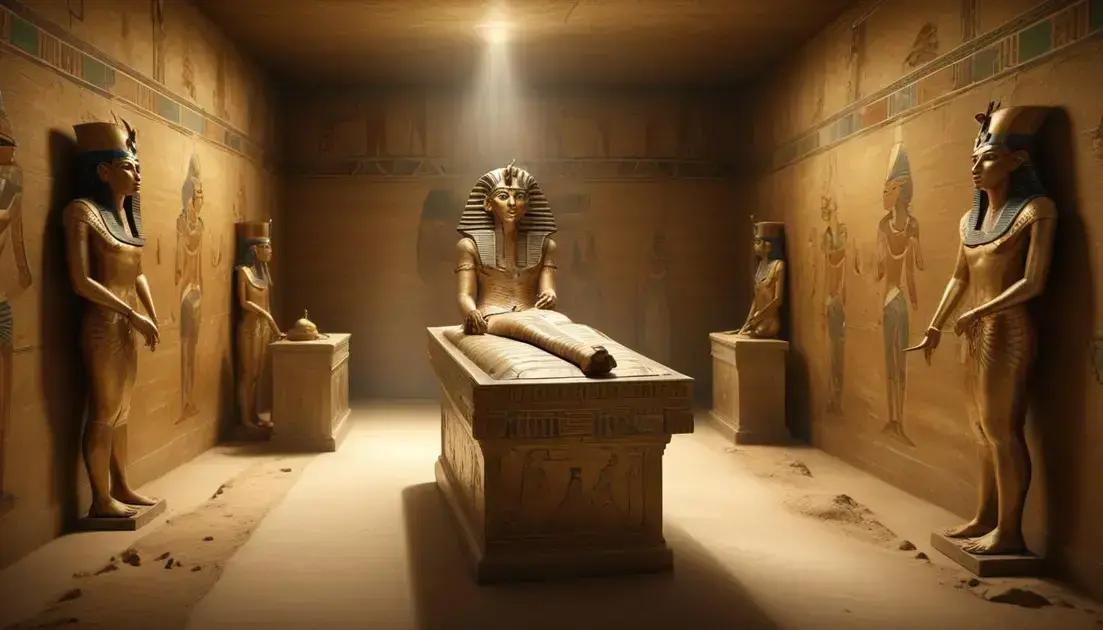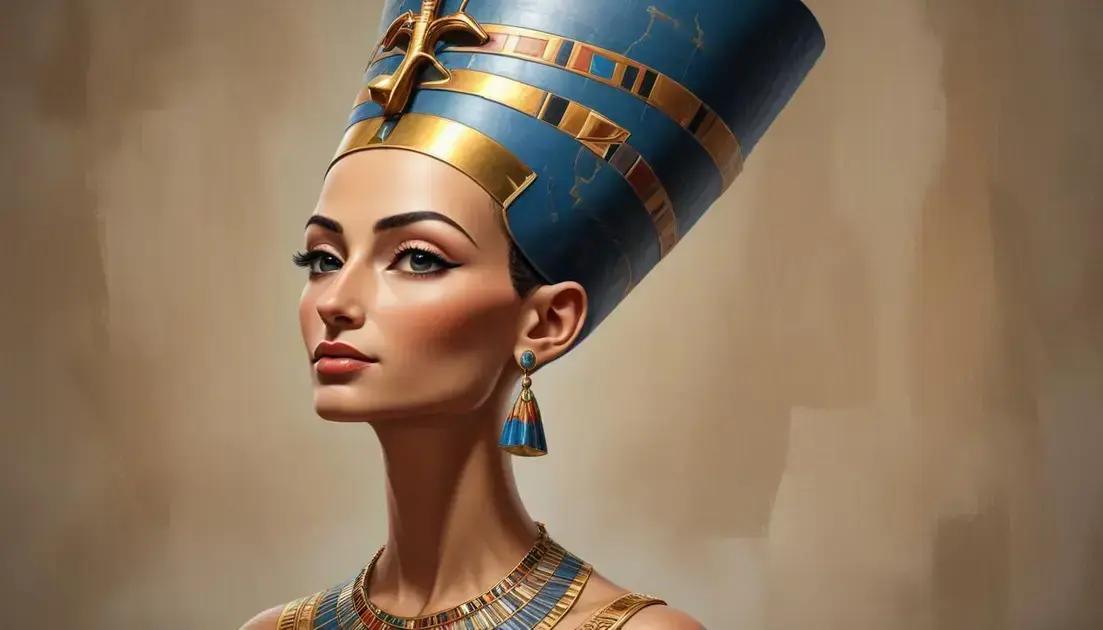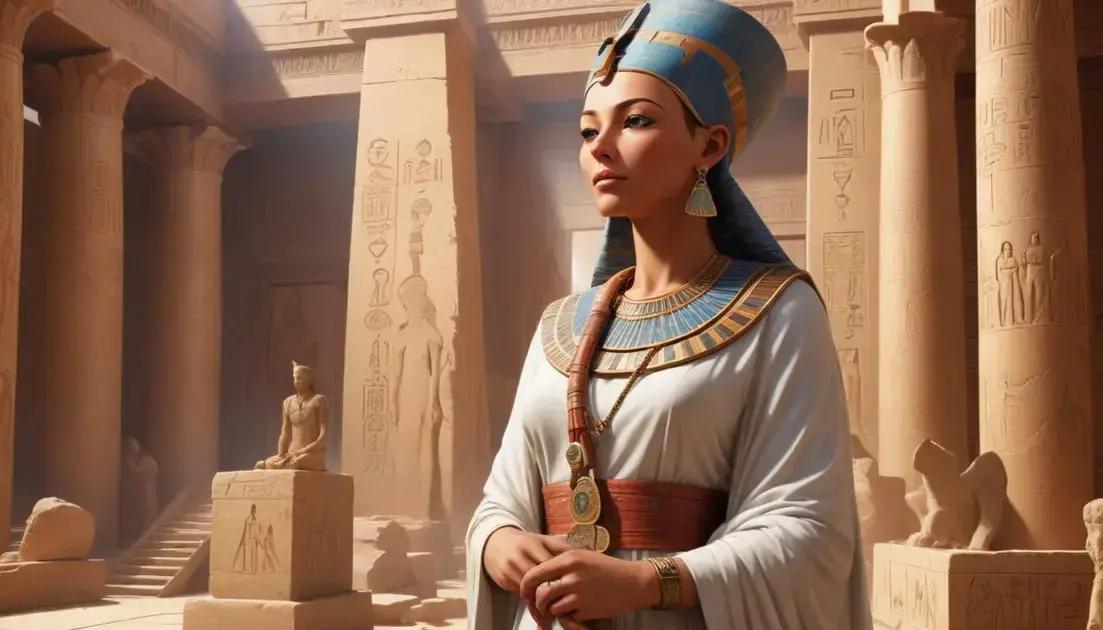
Curse of Tutankhamun: Truth or Myth? Discover the Story
The discovery of Tutankhamun’s tomb is significant in archaeology, revealing insights into ancient Egyptian life, culture, and beliefs. While many linked the deaths of expedition members to a mythical curse, scientific explanations point to health risks, accidents, and psychological stress. The artifacts found provide a rich connection to daily activities, art, and historical context, shaping our understanding of this fascinating civilization.
The Tutankhamun curse is a captivating tale of death and mystery. Did a supernatural force really linger after the tomb’s opening? Dive in to find out!
Histories of Tutankhamun
Tutankhamun, also known as King Tut, became famous long after his death. He ruled for a short time in ancient Egypt, around 1332-1323 BC. His tomb was discovered in 1922, largely untouched and filled with treasures. This made him one of the most well-known pharaohs.
Who Was Tutankhamun?
Tutankhamun was a young boy when he ascended the throne. Many believe he was around eight years old! He ruled during a time of great change in Egypt, as religious beliefs shifted. After his father, Akhenaten, died, Tut moved to restore traditional practices.
The Discovery of His Tomb
The discovery of his tomb by Howard Carter was a major event. It was located in the Valley of the Kings. Inside, they found amazing artifacts like gold masks, jewelry, and furniture. These items showed just how rich ancient Egyptian culture was.
The Mystery of His Death
Tutankhamun’s death remains a mystery. He died young—about 18 or 19 years old—under unclear circumstances. Some think he had an accident, while others believe he was poisoned. This has led to many theories and even more questions.
Legacy of Tutankhamun
Today, Tutankhamun is a symbol of ancient Egypt. His story has fascinated people for decades. Many tourists flock to see his artifacts in museums around the world. His legacy reminds us of the power and mystery of the ancient past.
The Curse Phenomenon
The curse of Tutankhamun has fascinated people for years. Many believe that anyone who disturbs the tomb will face bad luck or even death. This idea became popular after the tomb was opened in 1922.
Origins of the Curse
The stories about the curse started when members of the expedition faced unusual deaths. Some died in accidents or from diseases. These events led the press to link them to a curse. However, is there any truth to it?
Scientific Explanations
Experts suggest that bacteria or mold in the tomb could be to blame. The tomb was sealed for thousands of years. Therefore, it could have harmful pathogens. Some believe that these could have affected the explorers’ health.
The Role of Media
The media played a big part in creating the curse story. Sensational headlines grabbed attention and sparked curiosity. This got people thinking about mummy curses, even if it might not be true.
Modern Perspectives
Today, many see the curse as a myth, rather than a real threat. It serves as an example of how stories can grow and become popular. The curse adds to the mystery surrounding ancient Egypt and Tutankhamun’s legacy.
Explanations Behind the Deaths
Many people have wondered about the strange deaths linked to Tutankhamun’s tomb. After the tomb was opened, several expedition members died unexpectedly. Some attribute these deaths to a so-called curse, but there might be other reasons.
Possible Causes of Death
Scientists suggest that the deaths could be related to health issues. For example, several men became ill during their work in the tomb. Bacteria or mold could have been present in the air and on artifacts.
Injuries and Accidents
Some deaths were simply accidents. Excavation work can be risky. Tools and equipment might lead to injuries. It’s essential to keep safety in mind when working in such historic sites.
Mental Stress and Pressure
The excitement and pressure of the discovery could take a toll. Those involved faced intense media attention. This kind of stress can affect health and well-being, sometimes leading to fatal outcomes.
Modern Investigations
In recent years, scientists have looked at the remains of those who died. They hope to find clues about their health. Studies have shown that diseases common in ancient Egypt, like malaria, were still a risk during this time.
Archaeological Significance
The discovery of Tutankhamun’s tomb is a big deal in archaeology. It opened a window into ancient Egyptian life. The tomb itself was filled with treasures and artifacts. These items help us understand how people lived thousands of years ago.
Insights into Daily Life
Artifacts found in the tomb show everyday items, like tools and furniture. These objects give clues about daily activities in ancient Egypt. They reveal how they cooked, dressed, and even entertained themselves.
The Importance of Art and Symbolism
The artwork in the tomb is stunning. It includes detailed paintings and carvings. These works show important beliefs and rituals of the time. They help us learn about the spiritual life of ancient Egyptians.
Impact on Future Excavations
Tutankhamun’s tomb has influenced archaeology significantly. It set new standards for excavation practices. Researchers now use more careful methods to protect findings. It shows how important it is to preserve history for future generations.
Connection to Egyptian History
Studying this tomb helps connect the dots in Egyptian history. It provides historical context for understanding other pharaohs and their reigns. This connection deepens our appreciation of their culture and achievements.
Conclusion
In conclusion, the story of Tutankhamun and his tomb is full of mystery and excitement. The archaeological significance of the treasures found tells us so much about ancient Egyptian life. These discoveries help us connect with the past and understand their culture.
While the idea of a curse may capture our imaginations, scientific explanations show that there’s more to the story. The insights into daily life, art, and history shape how we view ancient Egypt today. Each artifact found in the tomb adds a piece to the puzzle of their remarkable civilization.
As we learn from Tutankhamun’s tomb, it reminds us to appreciate and protect our history. The more we explore and understand, the richer our knowledge becomes. Embracing this fascinating journey helps us keep the legacy of ancient Egypt alive for future generations.


